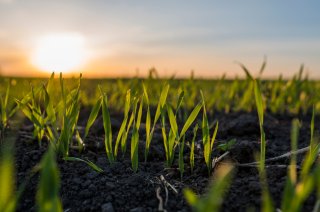
Project
Soil hydro-physics
Hydro-Physics soil data is receiving increasing attention because of its great importance in studies of soil subsidence, carbon sequestration, soil compaction, flooding, etc. Therefore this data is structurally recorded within the BRO and in a few years' time in INSPIRE. The data is subject to increasingly stringent requirements. This project aims to meet this demand.
Hydro-physics soil properties are not very well known to the general public, but they are the properties that describe the interaction between water and soil: they are crucial properties with a wide range of applications. Examples of hydro-physics soil data are water retention, water permeability, shrinkage and swelling, organic matter content, grain size distribution, soil structure, density, and capillary rise.
The water-soil system is of course also important in research relating to dissolved substances in the soil: water is the main transport medium (nitrates, phosphates, salts, pesticides, antibiotics, organic matter). Important areas of application are: food security (drought and water damage), agriculture (precision drainage, irrigation), soil salinization (evaporation and capillary rise), greenhouse gas emissions from the soil (N2O, CO2, CH4), nature conservation (wet and dry nature types), sustainable land use and healthy soils (function allocation), water quality (percolation and run-off of dissolved substances to groundwater and surface water), flooding and puddle formation (dyke stability, infiltration, water repellency), and infrastructural damage due to subsidence (swelling and shrinkage and oxidation of clay and peat due to dewatering).
This project meets the increasing demand and stricter requirements for hydro-physics soil data for BIS and BRO. It also helps other projects to collect hydro-physics soil data in a generic and reproducible way. Gaps in data for scaling units (eg some texture classes) are completed as much as possible within this project.
In 2020, comprehensive data was available for 240 samples. This year there are about 290. Due to its unique and valuable dataset compared to other hydro-physics datasets in Europe, this project offers an excellent opportunity to be a frontrunner in implementation in INSPIRE. Other projects (SOPHIE and GLOSOLAN) are working hard on harmonizing hydro-physics data.
BRO Realization National Provision is working hard on the transition of the data from BIS Netherlands to BRO.
In 2022, efforts will be made to expand and improve hydro-physics data to ensure that these are represented in sufficient numbers for all (texture) classes in the Netherlands.